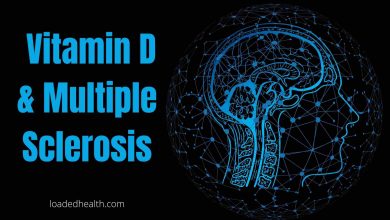Eating disorders are very significant psychological conditions that can affect behavioral, social, and physical functions. Physiological, behavioral, nutritional, and other medical conditions can be addressed by specific treatments. If you are suffering from eating disorders with proper medical care, you can resume your healthy lifestyle.
Some people can get eating disorders as it runs in their family. However, some can get them due to psychological reasons. These include obsessive-compulsive disorder, mood disorders, anxiety disorders, alcohol, and drug abuse problems.
This Article Contains
What Will Be The Consequences?
Eating disorders can result in death in acute cases due to significant health consequences, and they can affect people of any gender, no matter what stage of life is. But, they are most frequently found in young women and adolescents. Reasons may include body weight or obsession with food.
Sometimes eating disorders can cause dangerous complications and can negatively impact your life proficiency. They can also harm your digestive system, bones, heart, mouth, teeth, and many more.
Therefore, they must get treated. While treating an eating disorder, physical therapists also play a vital role in altered body image, body awareness, musculoskeletal conditions, compulsive exercises, anxiety management, osteoporosis, relaxation, and massage therapy.
How Physical Therapists Can Help?
Physical therapists have significant performance in treating eating disorders. They assess and regulate the physical activities of patients with all types of eating disorders. Distorted body image and compulsive exercising behavior are the two significant features of eating disorders. The role of physical therapist encompasses:
- Special Assessment
- Education
- Advice
- Treatment
- Psychological components of an eating disorder
Types of Eating Disorders
Different types of eating disorders with specific criteria that differentiate them from one another are:
ANOREXIA NERVOSA
Anorexia Nervosa is frequent among the other eating disorders and most significant. It is a deadly eating disorder described by self-malnutrition and intense fear of gaining weight. People with this disorder use excessive attempts to manage their weight and body shape that will negatively affect their health and life affairs.
With anorexia nervosa, people avoid eating foods, limit their calories, and monitor their weight, by using methods such as excessive exercise or using diet aids even when they are underweight. It mostly appears in young adulthood or adolescence.
There are two types of anorexia patients. One is those who lose their weight by dieting, fasting or exercising. Others are those who engage in intermittent binge eating. Following are the symptoms that may develop by starvation behavior.
- Dizziness from dehydration
- Anxiety
- Fatigue
- Heartburn
- Acute Constipation
- Muscle Weakness
- Fullness after Meals
- Depression and Irritability
- Thinning of Bones
- Muscle fractures from compulsive exercises
- Macronutrients deficiency
- Essential fat-soluble & water-soluble vitamins deficiency
BULIMIA NERVOSA
Bulimia nervosa is another disorder that includes three essential features:
- Recurrent episodes of binge eating
- Recurrent inappropriate compensatory behaviors
- Self-evaluation
It is a potentially life-threatening eating disorder commonly called bulimia. People who have bulimia may be slightly underweight, standard weight, or overweight. They restrict their eating throughout the day that leads to binge eating and purging. Binge eating is taking a large amount of food in a short period.
Purging means doing anything to atone for eating. During this disorder, people use unhealthy or harmful methods to get rid of extra calories. These methods include exercises, being too restrictive, taking supplements without medical approval, working out on an empty stomach, etc. Binge actions are associated with guilt, shame, or embarrassment. People with this disorder start compensatory behaviors such as fasting or using laxatives. Following are the symptoms that may develop by bulimia:
- Chronic Sore Throat
- Dizziness or Fainting from Dehydration
- Anxiety
- Swelling in the cheeks
- Heartburn
- Irritability and Depression
Binge Eating Disorder
Among all, binge eating disorder is the most ordinary and serious eating disorder in which you feel unable to stop eating. Usually, people overeat on occasions but, people with binge-eating disorders overeat regularly even after they are uncomfortably full.
If you have a binge-eating disorder, you may feel ashamed by your behavior or may feel guilty and vow to stop. This disorder can lead to obesity, hypertension, cardiovascular diseases, diabetes, and weight gain. People with this disorder don’t even try to compensate for this behavior with purging or exercise. Behavioral signs of binge-eating disorder include:
- Eating more rapidly than normal
- Unusual eating of a the large amount of foods
- Eating even feeling no hunger
- Eating alone because of feeling guilt
- Feeling embarrassed about overeating
Treatment can help with binge-eating disorders. Cognitive-behavioral psychotherapy is the best treatment for this disorder. Urgently seek medical help if you are experiencing any symptoms of this type of disorder because it can cause significant health or mental issues.
Complications may include poor quality of life, problems functioning with your personal life, social isolation, anxiety, depression, bipolar disorders, etc.
PICA
Pica is a type of disorder in which people eat items or objects that have no nutritional value. They eat harmless items such as dirt, ice, paper, soap, metal, clay, cloth, hair, charcoal, string, paint chips, chalk, pebbles, etc. It doesn’t mean they have an inversion to food. Also, its prevalence is not well known.
Pica comes out usually in people with an autism spectrum disorder, obsessive-compulsive disorder, stress, or malnourishment. It mostly occurs in children and it can lead to significant consequences such as lead poisoning, parasitic infections, choking, and intestinal blockages, constipation, teeth injuries, and intestinal infections. But, treatment can help avoid side effects.
Signs & Symptoms for Eating Disorders
Emotional and behavioral symptoms include:
- Extreme mood swings
- Feelings of guilt
- Skipping meals
- Distorted body image
- Decreased socializing
- Intense fear of gaining weight
- Preference of eating alone
- Difficulty concentrating.
Physical warning signs include:
- Low blood pressure
- Disruption of the menstrual cycle
- Gastrointestinal issues
- Weight fluctuations
- Slowed breathing
- Severe constipation
- Dizziness
- Muscle weakness
- Fainting
- Impaired immune system
Treatment for Eating Disorders
Treatment for eating disorders is usually based on symptoms. Your health care provider will plan and decide which mix of treatment is upright for you. The treatment may include these features:
PSYCHOLOGICAL TREATMENT
This include:
- Family therapy
- Cognitive-behavioral therapy
- Interpersonal psychotherapy
- Psychodynamic psychotherapy
NUTRITIONAL EDUCATION
Goals of nutrition education include:
- Practical meal planning
- Work toward a healthy weight
- Take steps to avoid bingeing
MEDICATIONSanumber
Medications are effective when combined with psychological therapy. Usually, antidepressants are the common medications to treat eating disorders.
In A Nutshell
Eating disorders can affect your life overall without you knowing and are responsible for many other physical and psychological disorders as well. The good news is that all of these disorders are treatable with a combined treatment approach. If you are having one please address it to your health care provider about it for early cure.
Follow Loaded Health for more updates on health and fitness issues.






